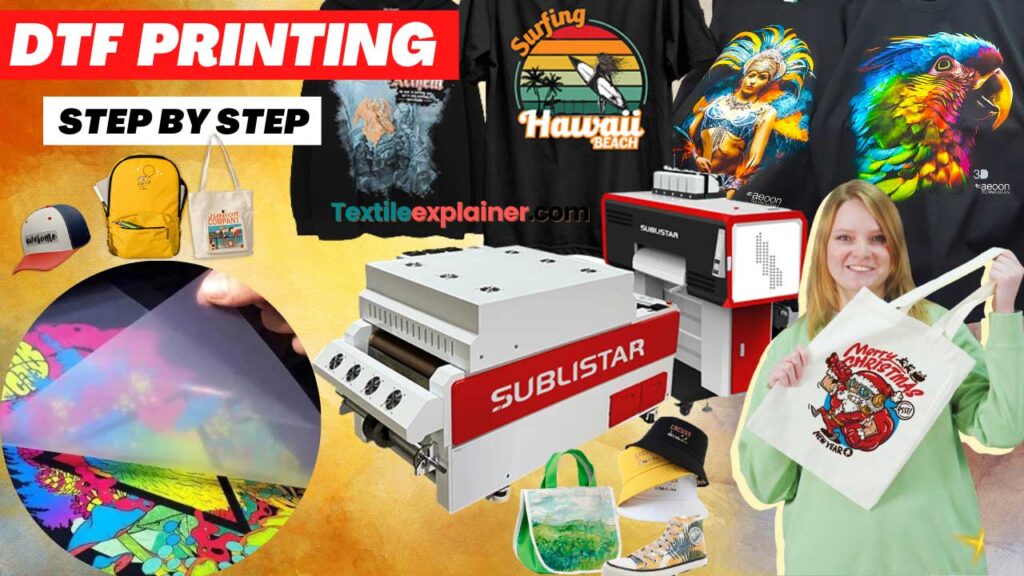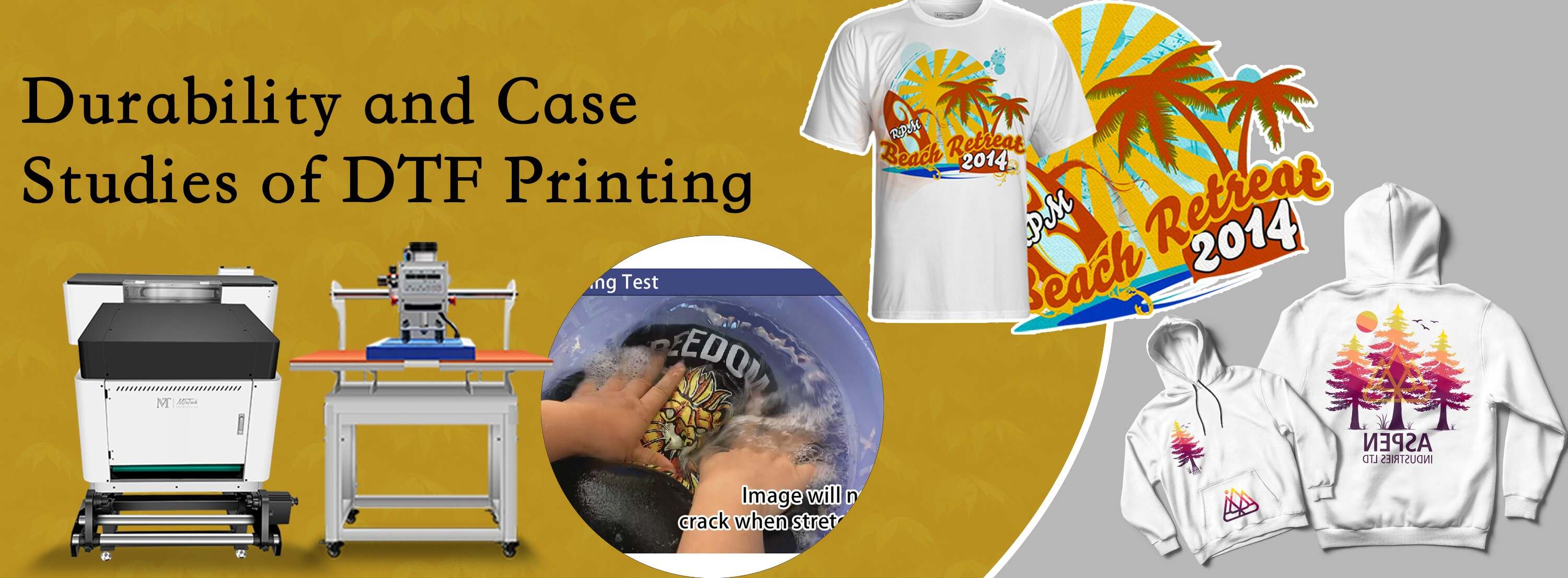Exploring the Art of DTF Printing: Methods and Applications Revealed
Exploring the Art of DTF Printing: Methods and Applications Revealed
Blog Article
The Future of Style: Exploring DTF Printing Modern Technology in the Textile Market
Recently, the fabric industry has actually seen a significant shift in the direction of innovative modern technologies that are reshaping the landscape of fashion manufacturing. Among these improvements, Direct to Film (DTF) printing modern technology has become a promising contender, supplying unique abilities and opportunities for developers and manufacturers alike. This innovative printing method has stimulated passion due to its prospective to change standard textile printing processes. As we explore the implications and possibilities of DTF innovation in the world of style, it comes to be evident that its combination can redefine industry standards and pave the method for a brand-new period of imaginative expression and efficiency.
Development of Textile Printing
From the old people using strategies like block printing to the electronic transformation of today, fabric printing has actually constantly pressed limits. As the craft spread to other components of the world, brand-new approaches such as display printing and roller printing emerged throughout the Industrial Transformation, transforming the fabric market.
In the 20th century, developments in technology led to the growth of rotary display printing, permitting faster and more complex designs. The intro of digital fabric printing in the late 20th century marked a substantial shift towards even more sustainable and functional printing methods. Today, with advancements like Direct-to-Fabric (DTF) printing technology, developers can create lively, detailed prints with better performance and decreased ecological impact. The advancement of textile printing showcases a rich background of creativity, ingenuity, and technical development in the world of style and style.
Advantages of DTF Technology
With the development of fabric printing strategies from old methods like block printing to modern advancements such as digital printing, the introduction of Direct-to-Fabric (DTF) innovation has actually dramatically enhanced the efficiency and sustainability of textile printing processes. One of the primary benefits of DTF technology is its capacity to straight publish layouts onto textile without the need for transfer papers, which decreases waste and simplifies the production process. Additionally, DTF printing allows for greater shade vibrancy and information accuracy compared to conventional techniques, allowing textile producers to create intricate and premium layouts effortlessly.
Additionally, DTF innovation is understood for its adaptability, as it can be utilized on various kinds of textiles, consisting of natural fibers like cotton, silk, and wool, as well as artificial products such as polyester and nylon (DTF Printing). This flexibility opens up a vast array of possibilities for designers and producers to explore different textures and products, causing more cutting-edge and special items in the garment industry. Generally, the implementation of DTF modern technology stands for a significant innovation in textile printing, offering many benefits that contribute to the future sustainability and creative thinking of the market
Sustainability in Fashion Manufacturing
Emphasizing eco-friendly methods is critical in modern fashion manufacturing, aligning with the growing consumer need for sustainable items. Over the last few years, the fashion sector has encountered enhancing analysis due to its considerable environmental impact, consisting of extreme water usage, chemical contamination, and fabric waste. As a response, lots of style brands are now integrating sustainable methods into their production procedures to reduce damage to the setting.
Sustainability in fashion production encompasses different facets, such as using recycled and natural products, reducing energy intake, carrying out moral labor practices, and promoting transparency throughout the supply chain. Furthermore, developments in modern technology, like DTF printing, deal opportunities to even more improve sustainability in fabric production. This modern technology makes it possible for precise printing on textiles, decreasing ink waste and water use contrasted to standard printing techniques.
Layout Freedom and Customization

Furthermore, DTF printing facilitates personalization on a scale formerly unattainable, enabling for personalized apparel and special pieces customized to private preferences. Customers can now proactively take part in the design procedure, producing garments that reflect their design and personality. This modification not only boosts the consumer experience yet likewise advertises a sense of exclusivity and individuality in a market saturated with mass-produced clothing. In general, DTF printing modern technology transforms the layout landscape in the textile sector, providing countless possibilities for imaginative expression and customized style.
Impact on Supply Chain & Market Trends
DTF printing modern technology in the fabric sector is improving supply chain dynamics and influencing market fads with its performance and modification capabilities. By enabling on-demand printing and getting rid of the requirement for big stocks, DTF innovation enhances the supply chain procedure. Makers can generate things as required, lowering waste and storage space prices. This just-in-time manufacturing design likewise enables for quicker reaction to market demands and trends, leading to a more agile and receptive supply chain.
Furthermore, the customization possibility of DTF printing modern technology is reinventing the market fads in the fabric industry. Customers progressively look for personalized and one-of-a-kind products, and DTF permits brands to find out here now supply custom designs cost-effectively. This modification ability not just improves customer fulfillment but additionally opens up brand-new chances for businesses to satisfy niche markets and distinguish themselves from competitors. Therefore, DTF technology is driving a change in the direction of more innovative and customer-centric strategies within the textile sector, shaping the future of fashion.

Final Thought
Finally, DTF printing innovation is changing the textile market by supplying various advantages such as style personalization, sustainability, and liberty. This ingenious modern technology is improving the future of style production, impacting supply chains, and driving market patterns in the direction of a lot more reliable and eco-friendly methods. As the market proceeds to progress, DTF printing will certainly play a critical duty fit the method textiles are created and consumed in the years to come.
From the ancient worlds utilizing methods like block printing to the digital revolution of today, textile printing has actually consistently pressed borders. As the craft spread to various other parts of the world, new methods such as screen printing and roller printing arised throughout the Industrial Change, reinventing the textile industry.
The introduction of electronic fabric printing in the late 20th century marked a significant shift in the direction of even more functional and lasting printing methods.With the evolution of fabric printing methods from ancient methods like block printing to modern-day advancements such as digital printing, the introduction of Direct-to-Fabric (DTF) modern technology has actually significantly enhanced the performance and sustainability of textile printing processes (DTF Printing).In action to the critical change towards sustainability in style production, the fostering try here of ingenious technologies like DTF printing not just addresses environmental problems however also opens up methods for unequaled style liberty and personalization in the fabric market
Report this page